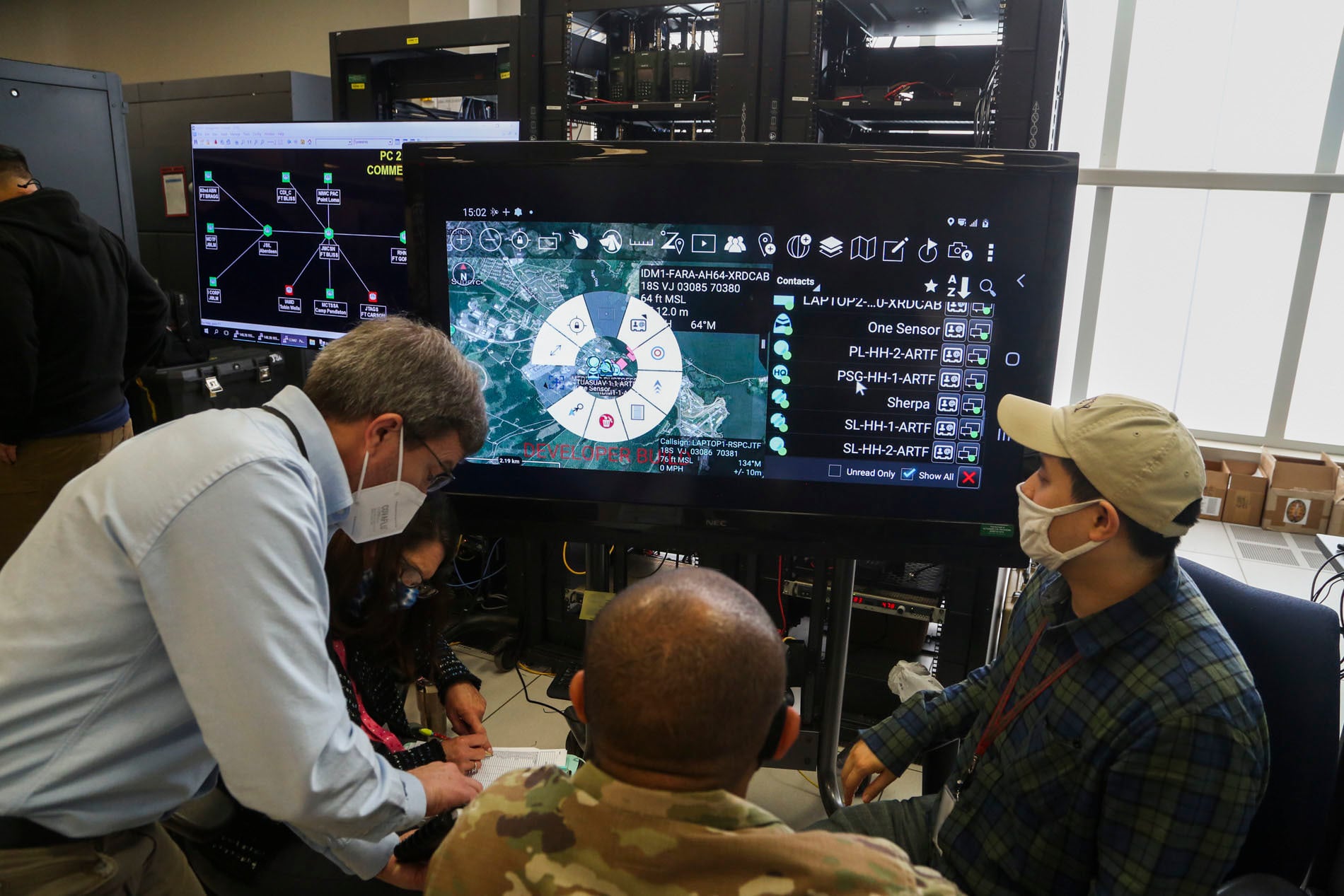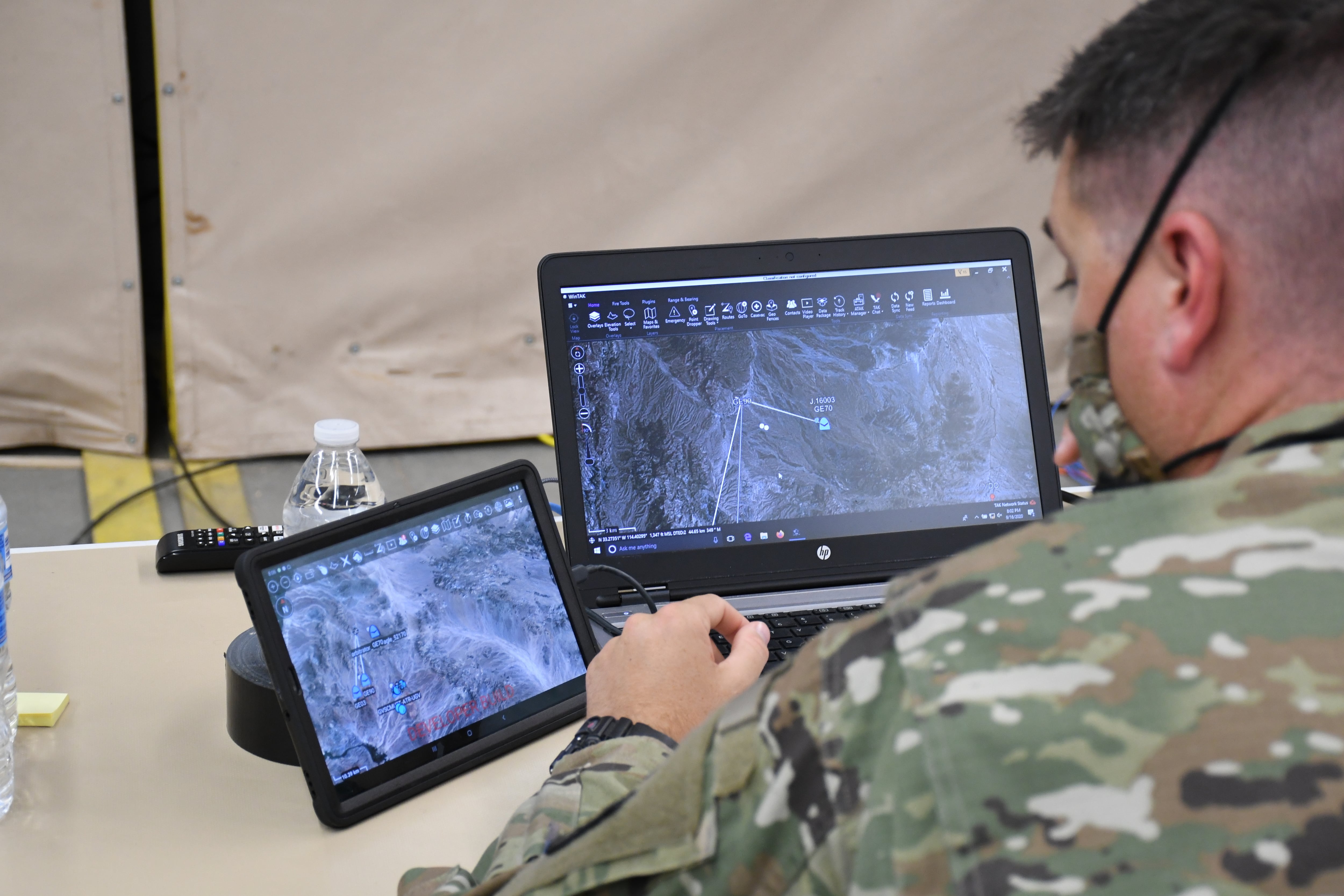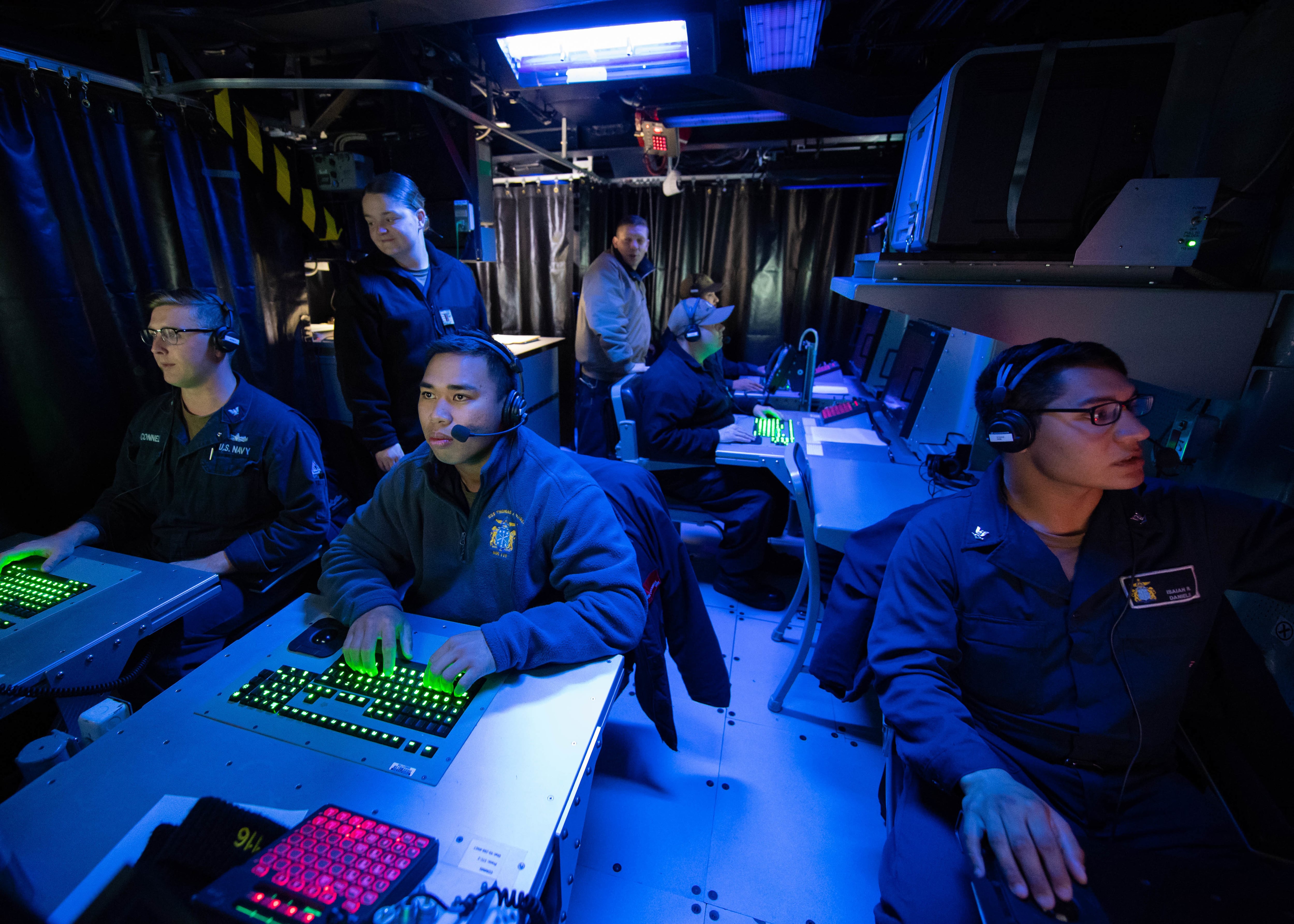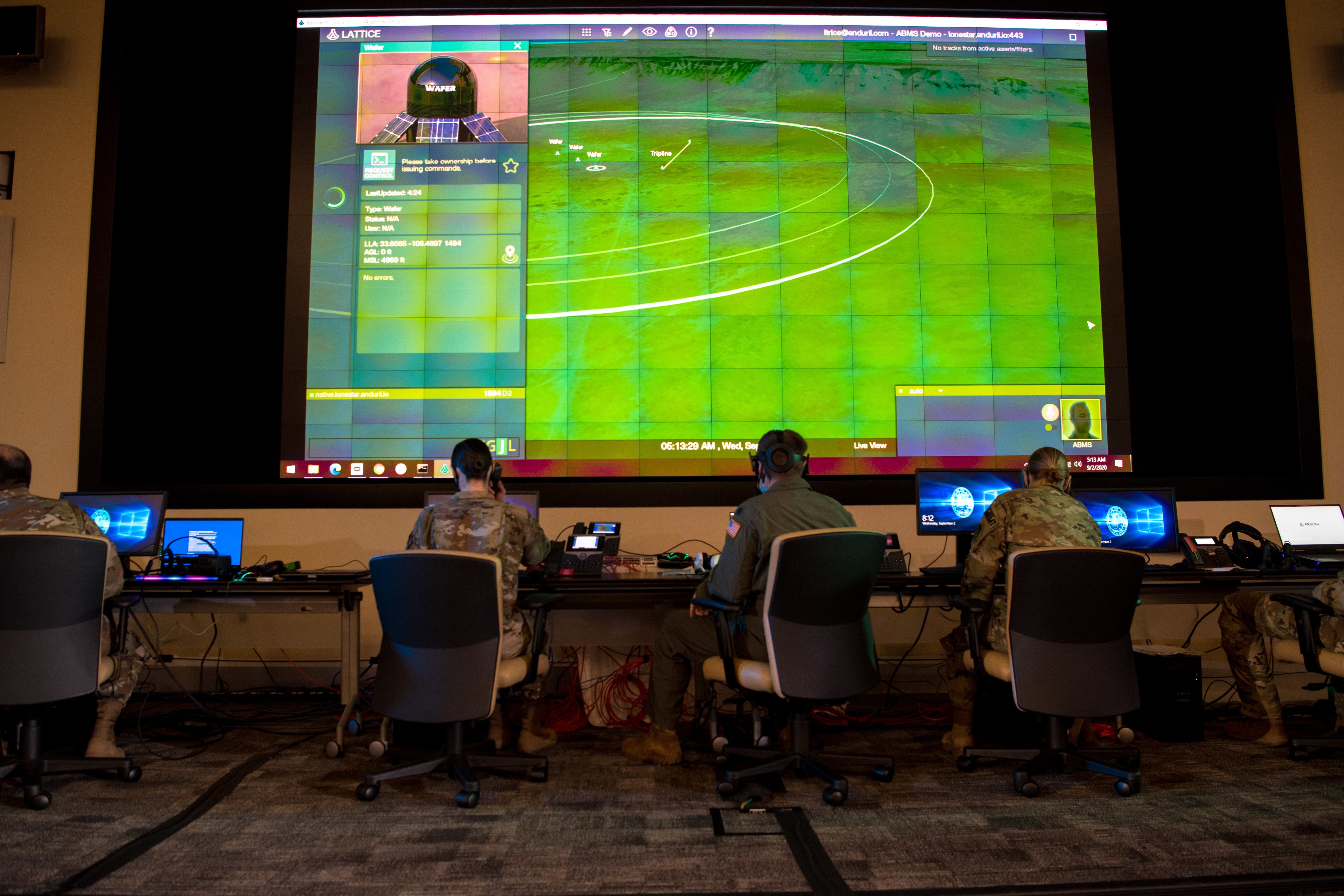Editor’s note: This article on Air Force budget proposals for joint war fighting is part of a story package about what the Pentagon wants to spend on its signature strategy to win future conflicts, called Joint All-Domain Command and Control.
Pentagon JADC2 budget: What the budget reveals — and leaves unclear — about the cost of JADC2 | Army budget: Proposed modernization increases show Army sees joint operations as ‘top priority’ | Navy budget: Classified Navy JADC2 budget plan has a few spending hints
WASHINGTON — The Advanced Battle Management System appears to be reeling after Congress slashed its funding earlier this year. Originally pitched as a replacement for the E-8C JSTARS surveillance aircraft, ABMS slowly morphed into an Internet of Things modernization program — connecting sensors and shooters, processing data with AI and unlocking new capabilities with emerging technologies.
While the Air Force’s request of $203.8 million for ABMS is an increase over what Congress allotted in FY21, it represents a severe cut to the service’s original vision for the program for Joint All-Domain Command and Control.
“I’m not surprised because the program has been in a bit of trouble. Congress cut the funding significantly in FY21, and I think the Air Force has had a bit of trouble articulating what exactly the program is building,” Todd Harrison, an aerospace and budget expert with the Center for International and Strategic Studies, told C4ISRNET.
In its FY21 request, the Air Force laid out a bold plan to aggressively fund ABMS over the next few years, starting with $302.3 million in FY21 and cresting at $1 billion in FY24. Congress dealt the plan a gut punch when it provided $143.8 million less than requested, largely due to what lawmakers called unjustified growth, forcing the Air Force to abruptly curtail spending plans. In response, the Air Force canceled one of three ABMS technology demonstrationsslated for this year.
Congress’ action will reverberate into FY22. According to Future Years Defense Program projections, the Air Force initially planned to spend $449.3 million on ABMS in FY22. The proposed $203.8 million that made it into the request is a reduction of $245.4 million from that earlier plan.
How is ABMS defined?
Much of the friction stems from confusion from Congress and outside observers over what ABMS is.
Still, the cuts aren’t the entire story. Some ABMS funding would continue under different names. Most notably, the budget would transfer $82.4 million to the Department of the Air Force Technical Architecture Design, Integration and Evaluation. “Typically when they move funding into a different program element, then it really is being managed separately,” explained Harrison.
“It has not been well defined in terms of: What is this program actually buying? Is it buying communications systems? Is it buying data processing systems? Is it just designing networking protocols? What exactly is it? And so I think that’s given it some problems on the Hill,” Harrison said.
A Government Accountability Office report from April 2020 criticized Air Force management of the program, stating that the department lacked an overall plan for ABMS and didn’t present a clear business case for the varied technologies involved.
At the time, the Air Force’s then-Chief of Staff Gen. Dave Goldfein dismissed the report as outdated and lacking essential classified information, even though the Air Force’s assistant secretary of defense for acquisition concurred with all four recommendations. GAO Director Marie Mak disputed Goldfein’s claims, stating that her office had access to classified andup-to-date information.
While the government watchdog hasn’t officially reviewed ABMS since, Mak told C4ISRNET in a recent interview that the report led to positive developments in the program, and she is cautiously optimistic that the Air Force is moving in the right direction. Specifically, the decision to align ABMS under the Air Force’s Rapid Capability Office helps address GAO’s concern about a lack of program-level management, and the FY22 budget request includes more detail and specificity than past submissions. The decision to move focus away from on-ramping demonstrations is also a positive development, she said.
The Air Force’s initial drive for ABMS demonstrations was a major concern for Mak, who didn’t see a clear plan for how applications designed to work in artificially designed scenarios would translate effectively to an unpredictable battlefield environment.
“When we first started looking at ABMS it was demo after demo, and we were sort of like, what’s your point?” Mak said about the transfer from controlled conditions to the battlefield. “And at each demo, it wasn’t clear how that was all linked and how it was going to all fit into ABMS.
“That’s where I felt like it wasn’t really clearly defined, and I think now that the RCO [Rapid Capability Office] has taken it they’ve made a concerted effort to not focus on just the demos … and that’s what the budget seems to be focusing on as well longer term. So that’s a good thing,” she added.
GAO likely will likely further study the system in the fall.
What’s in the budget request?
Harrison also saw some positives to the FY22 request. Slowing the program was a good first step, giving the Air Force some breathing room to bring Congress back on board, he said. On the other hand, there was little indication of how the Biden administration willapproach the program.
Still, the cuts aren’t the entire story. Some ABMS funding would continue under different names. Most notably, the budget would transfer $82.4 million to the Department of the Air Force Technical Architecture Design, Integration and Evaluation.
“Typically when they move funding into a different program element, then it really is being managed separately,” explained Harrison.
He said it appeared that the Air Force was spinning off some parts of the program to focus ABMS under the Rapid Capability Office.
Because ABMS isn’t one program, many elements can be considered ABMS enabled or ABMS adjacent. For example, the Air Force asked for $8.8 billion for its intelligence, surveillance and reconnaissance portfolio, which it said “underpins the ABMS architecture.”
The service also would set aside $4.3 million to procure components, materials and installation service to support JADC2 activities, including two four-month ABMS on-ramps in FY22. Meanwhile, the U.S. Space Force asked for $17.1 million for the Unified Data Library, a cloud-based data store that it calls “the foundational element of the ABMS data architecture.”
RELATED

RELATED

RELATED

Nathan Strout covers space, unmanned and intelligence systems for C4ISRNET.








